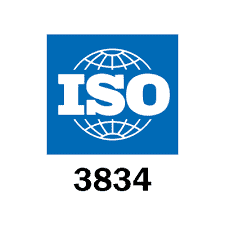Welding data monitoring in arc welding
Welding data monitoring with quality assurance systems (QA system) is mainly applied in automated welding systems for mass production or for welding tasks that require documentation of the welding parameters.
Welding data monitoring also covers application areas that are not sufficiently covered by the classical processes of non-destructive testing and, in automated mass production, allows monitoring of all welds during production.
What is Welding Data loggers?
The welding data loggers system represents the system that is used to capture the welding data during the welding.
All the essential parameters such as welding current, welding voltage, arc length, travel speed, and other essential variables are captured using the system which is responsible for the weld deposit quality. The system works as a data capturing device as well as verifying the data for the welding process.
Purposes of the Data logger system
- Measurement and display of the quality-relevant parameters
- Recording and storage of the signal curves
- Determination of “working ranges”
- Monitoring limits of the “working ranges”
- Alerts when the “working range” is left
- Statement on the probable quality of the weld
- Manufacturing statistics
Measuring the process parameters in resistance welding
The process heat during resistance welding is generated by a current I flowing through a resistor R for a certain time t.
The voltage U and the resistor R determine the current level. So the current is the dependent parameter.
This correlation is expressed in the equation for the current heat Q:
Q = I2 x R x t
The resistance R is a complex parameter that depends particularly on the electrode force, the material and its surface quality (contact resistance).
The electrode geometry plays a further important role. Depending on the contact surface (convexity), the current density increases or decreases.
So the following parameters are important for the welding operation:
- Welding current
- Electrode force
- Welding time
- Contact resistance layer thickness
- Geometry of the electrodes.
Welding currents during resistance welding
The levels, types and frequencies of current in resistance welding cover a broad range. This goes from current levels of 200 A (micro joining) to approx. 400 kA (projection welding).
Among the alternating currents, the current type goes from pure sinus to sinusoidal currents with strongly cut phases.
Among the direct currents based on 50 Hz mains currents, the transformer circuit and the choice of the diodes rectifier circuit play an important role concerning the ripple of the direct current.
Currents with high rates of change and low residual ripple are generated when using inverter current sources.
To measure all these currents, mainly magnetic voltmeters are used. They are generally called ‘pulsed current meters’.





